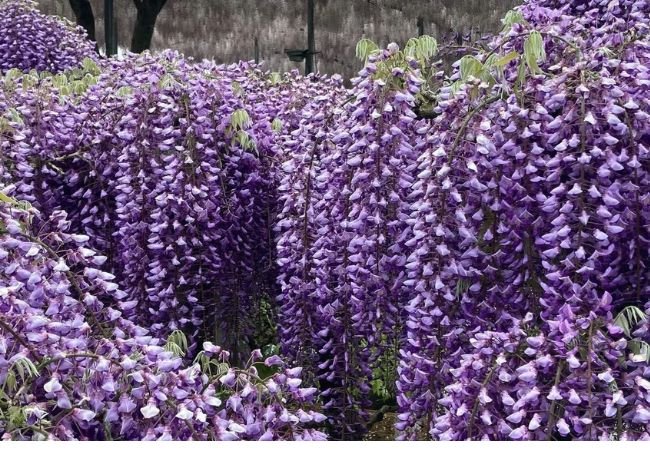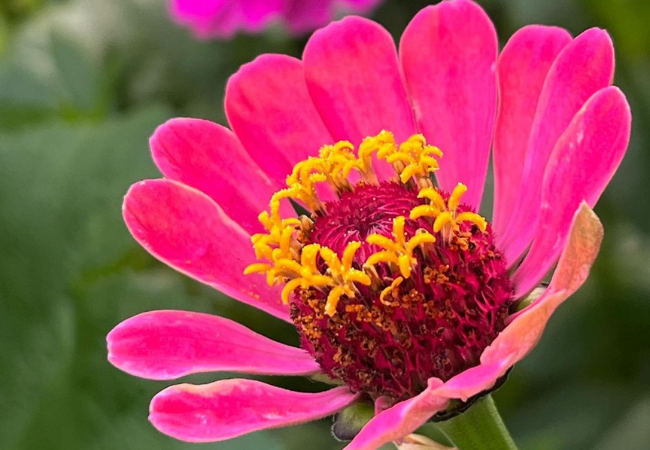Discover the charm of Wisteria, a stunning flowering vine. Learn about its varieties, care, and impact on gardens in this easy-to-read guide for USA gardeners.
Wisteria is a breathtaking flowering vine that can transform any garden into a magical wonderland. With its cascading purple, pink, or white blooms, Wisteria has captured the hearts of gardeners across the USA. Let’s explore this beautiful plant and learn how to grow and care for it.
Here’s the information chart for Wisteria in an easy-to-understand format:
| Attribute | Description |
|---|---|
| Botanical Name | Wisteria sinensis (Chinese Wisteria), Wisteria floribunda (Japanese Wisteria) |
| Common Name | Wisteria |
| Plant Zone | USDA Zones 5-9 |
| Sun Exposure | Full sun to partial shade |
| Soil Type | Well-drained, fertile soil |
| Watering | Regular watering, especially in dry periods; avoid waterlogging |
| Growth Habit | Deciduous, woody vine |
| Height/Spread | Can grow 10-30 feet or more in height and spread equally wide |
| Special Features | – Produces long, cascading clusters of fragrant flowers in spring and early summer, requires strong support and regular pruning to control growth |
What is Wisteria?

Wisteria is a woody, deciduous vine belonging to the pea family. It’s known for its long, hanging clusters of fragrant flowers. Originally from Asia and North America, Wisteria has become a beloved ornamental plant in many USA gardens.
Types of Wisteria
There are several types of Wisteria, including:
- Chinese Wisteria (Wisteria sinensis)
- Japanese Wisteria (Wisteria floribunda)
- American Wisteria (Wisteria frutescens)
- Kentucky Wisteria (Wisteria macrostachya)
The Appearance of Wisteria
- Flowers: Long, drooping clusters (racemes) of pea-like blooms
- Colors: Usually purple, but also white, pink, or blue
- Leaves: Compound leaves with multiple leaflets
- Size: Can grow up to 30 feet tall and spread widely
- Blooming time: Spring to early summer
Why Gardeners Love Wisteria
- Stunning beauty: Creates a dramatic, romantic atmosphere
- Fragrant flowers: Produces a sweet, pleasant scent
- Attracts pollinators: Bees and butterflies love Wisteria
- Versatile: Can be trained on pergolas, arches, or walls
Growing Wisteria in Your Garden
Here’s what you need to know to grow healthy Wisteria:
Planting
- When to plant: Spring or fall
- Where to plant: Full sun with well-draining soil
- Support: Needs a strong structure to climb on
Care Tips
- Watering: Regular watering, especially when young
- Fertilizing: Use a low-nitrogen fertilizer in spring
- Pruning: Regular pruning is crucial for controlling growth and encouraging blooms
Interesting Facts About Wisteria
- Long-lived: Can survive for over 50 years
- Strong grower: Can lift and damage weak structures
- Nitrogen-fixing: Improves soil quality
- Slow to bloom: May take 3-5 years before first flowering
Benefits of Wisteria in Your Landscape
- Provides shade: Great for covering pergolas and arbors
- Improves air quality: Like all plants, helps clean the air
- Creates privacy: Can be used as a beautiful living screen
- Enhances property value: Adds aesthetic appeal to homes
Potential Challenges and Solutions
While beautiful, Wisteria can present some challenges:
- Invasive tendencies: Choose native species or containment methods
- Structural damage: Ensure strong support and regular pruning
- Toxicity: Keep away from pets and children
- Delayed blooming: Patience and proper care are key
Using Wisteria in Landscaping
Wisteria can be a stunning addition to your garden:
- On pergolas: Create a romantic, shaded seating area
- Along fences: Transform ordinary boundaries into flowering walls
- As a standalone tree: With proper pruning, Wisteria can be shaped into a tree form
Eco-Friendly Aspects of Wisteria
- Supports wildlife: Provides nectar for pollinators and shelter for birds
- Drought-tolerant: Once established, requires less water
- Natural cooling: Provides shade, reducing energy costs for cooling
Native vs. Non-Native Wisteria
- Native species (American and Kentucky Wisteria) are better for local ecosystems
- Non-native species (Chinese and Japanese) can be invasive in some areas
- Check with your local Cooperative Extension Service for recommendations
Wisteria is a stunning addition to any garden, offering beauty, fragrance, and ecological benefits. While it requires some care and patience, the rewards of its cascading blooms are well worth the effort. Whether you choose a native or non-native variety, proper management will ensure your Wisteria enhances your landscape without becoming problematic. With its enchanting flowers and lush foliage, Wisteria can turn your garden into a picturesque haven that you’ll enjoy for years to come.
For more information on Wisteria and other garden plants, visit the USDA Plants Database or consult your local gardening extension office.
For more gardening tips and plant care guides, visit usagardenhub.com.






One comment on “Wisteria : The Enchanting Cascading Beauty”